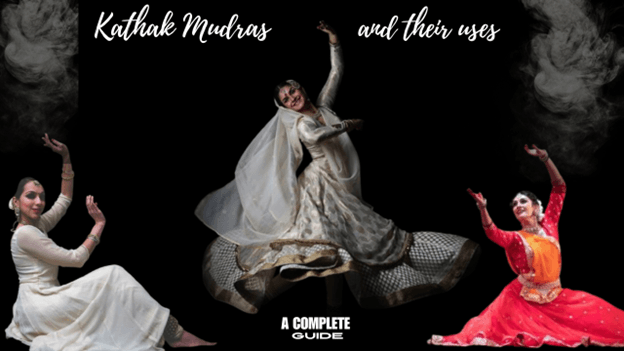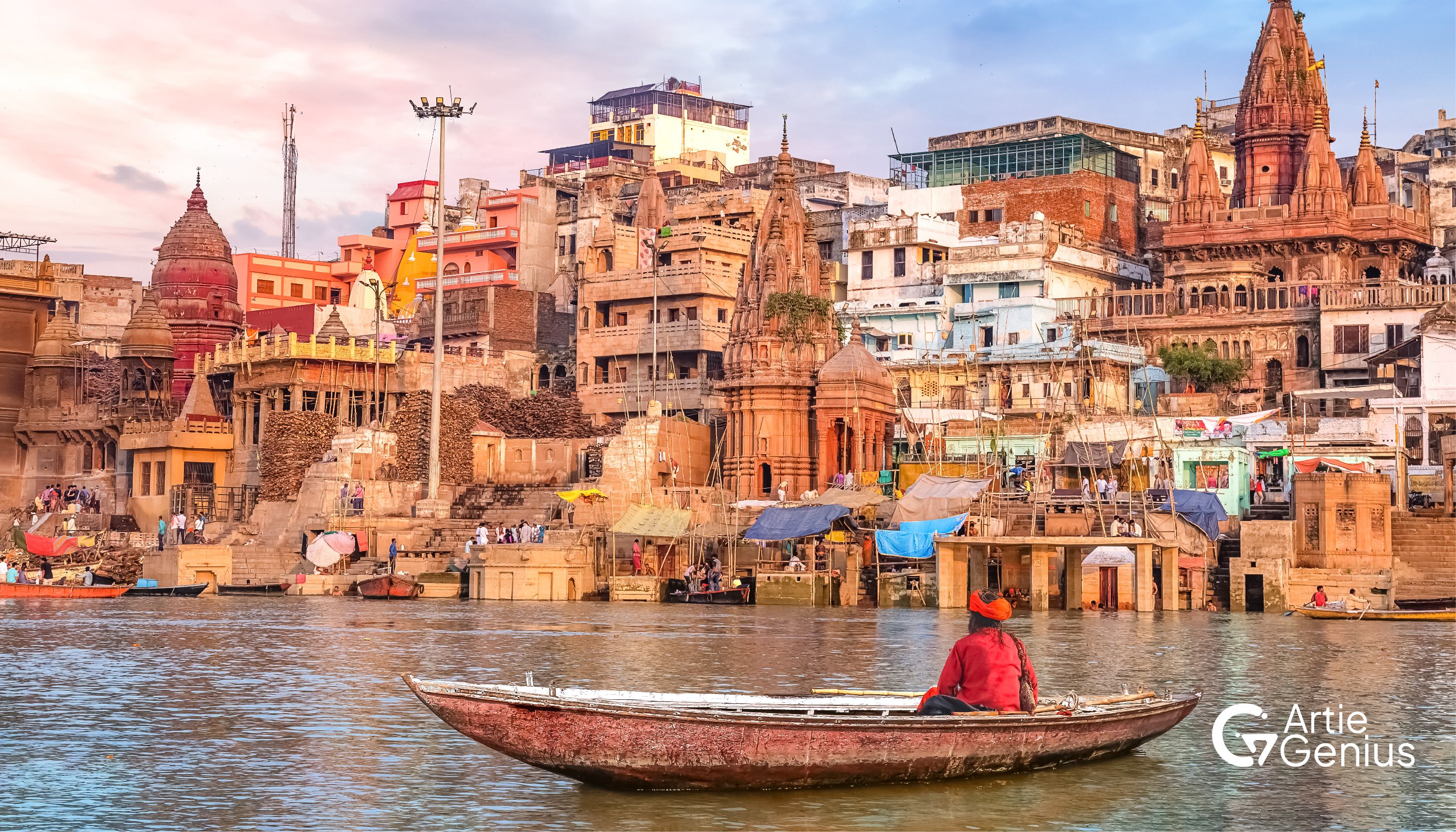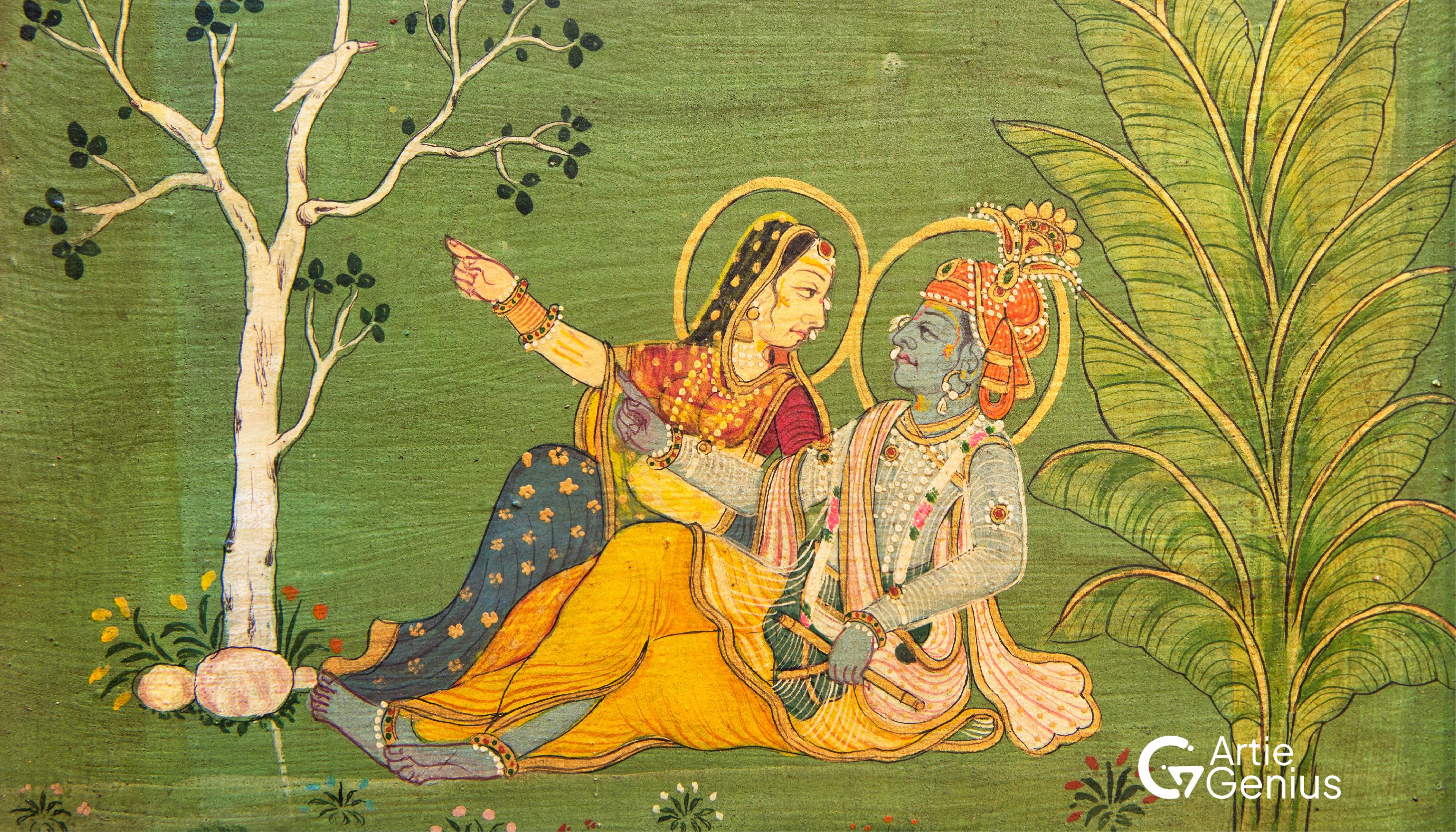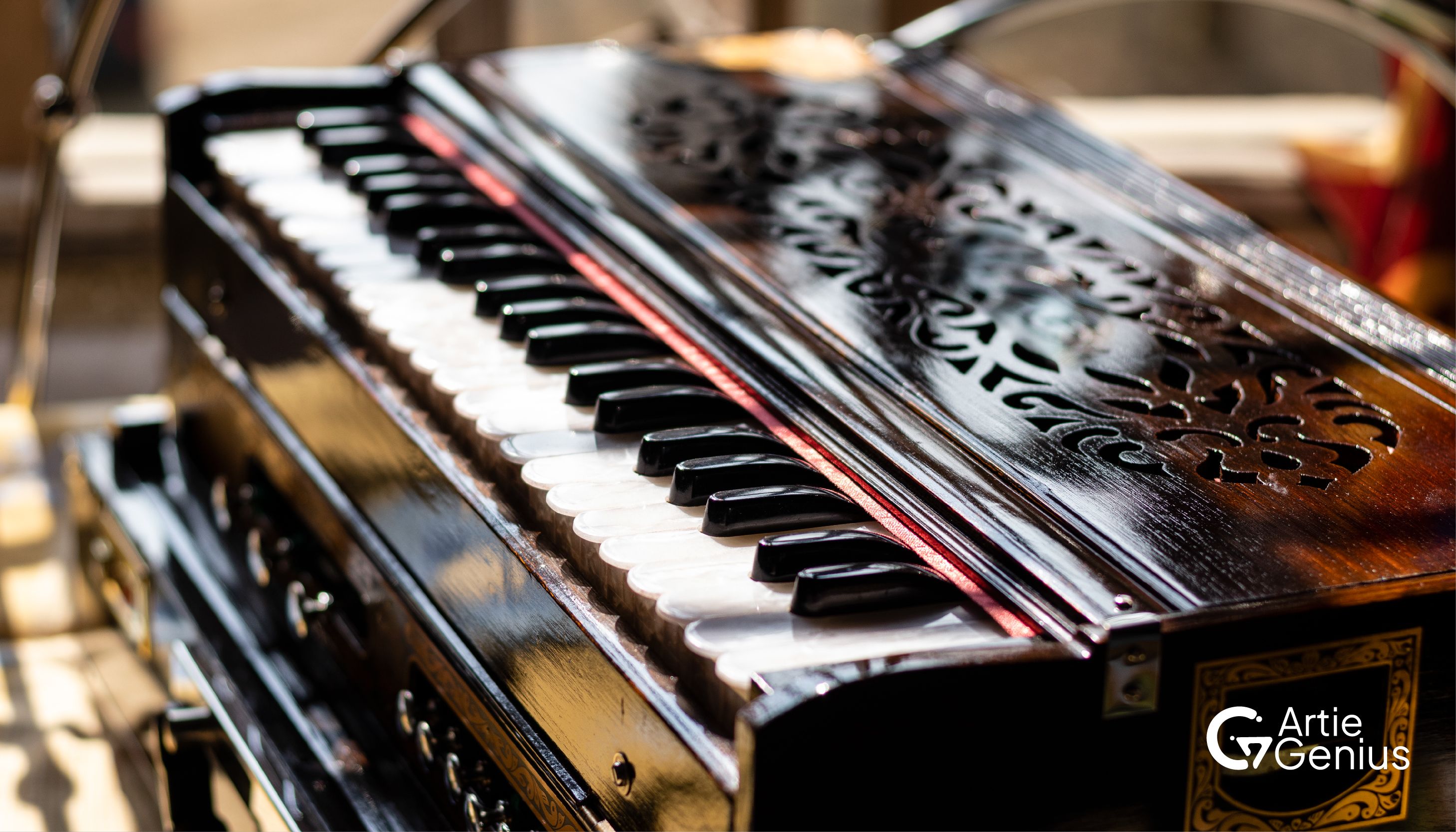Kathak A captivating Indian classical dance, Kathak utilizes intricate footwork and graceful expressions to tell budding tales. But what really sets Kathak mudras, and their uses apart is the range of expressive hand gestures. These mudras function as the most important words in the language of the dance helping tell stories that cannot be told otherwise, even without a single spoken word.
What Are Kathak Mudras?
Definition and Origin Mudras are used in all styles of Indian classical dance, but they serve two purposes when it comes to Kathak mudras and their uses include enhanced nritya or rhythm and a storytelling tool. They stretch the medium, combining touch-sensitive accuracy with emotional heft.
Importance in Indian Classical Dance
While Mudras are common in all Indian classical dance styles, in Kathak they serve a twofold purpose enhancing nritya or rhythm and serving as a narrative technique. They push the medium, marrying tactile precision with emotional weight.
Types of Kathak Mudras
Single-Handed Gestures (Asamyukta Hasta Mudras): These mudras involve only one hand and are the basis of muddy in Kathak.
Examples include: Pataka: That of a flag which is Used to represent victory or grandeur. Ardhachandra : Shaped like the half-moon, also referring to a crescent moon or offering area
Samyukta Hasta Mudras (Double-Hand Gestures) In this, both of your hands work in collaboration.
Examples include:
Anjali: palms together (in prayer); sign of reverence or respect Shivalinga: Shivaling is one of the sacred symbols of Lord Shiva.
Names of Kathak Mudras and Their Meanings
Pataka (Flag) Patakahasta (all fingers extended) depicts acts such as blessing, stopping, or denoting deities.
Tripataka (Three Part Flag) This variant includes bent fingers, more often implemented to signify a crown or flames.
Hamsasya (Swan Beak) A subtle hand gesture that represents holding a fragile object, such as a flower or passing thread through the eye of a needle.
Using Kathak Mudras for Storytelling
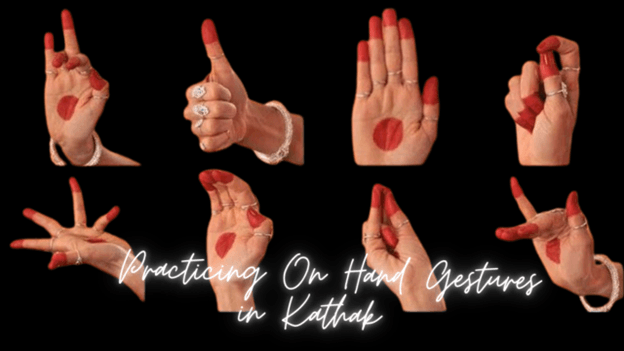
Expressing Emotions Mudras such as the Ardhapataka or Mrigashirsha convey emotions of love, fear or longing and these are an indispensable component in narrating emotion:
Depicting Nature Mudras indicate different things, movements that represent trees, rivers or moon use Alabama and C etc. Kathak and their uses can even represent characters, a mudra can speak for all from God-Goddess to common man giving an opportunity to the dancer to play more than one character at a time in a performance.
Importance of Mudras in Kathak Dance Enhancing the Narrative These gestures are the tool that provide depth and precision, translating abstract themes into meaningful visual narratives. Connecting with the Audience Gestures are a specially focused gesture, and therefore in such an intimate association between dancer and audience you want to be certain that your message comes across.
Step-by-Step Guide to Practicing Kathak Mudras
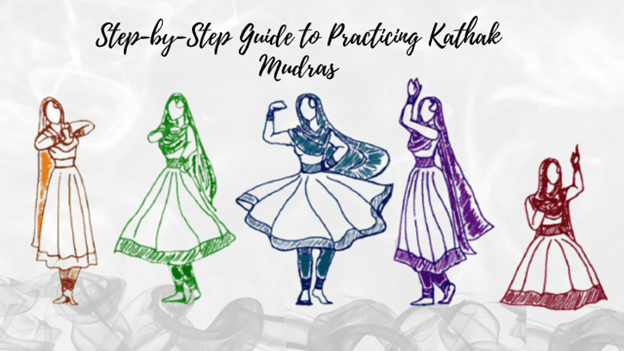 Having gained familiarity with mudras and the purpose they serve, let us take a look at how you can accomplish these to perfection. These mudras require practice, precision and commitment.
Having gained familiarity with mudras and the purpose they serve, let us take a look at how you can accomplish these to perfection. These mudras require practice, precision and commitment.
Step 1: Start with the Basics Start with some easy mudras such as Pataka and Ardhachandra. Read that focus on the shapes of hands and what they mean So you can do these mudras in front of a mirror that ensures your body is following the right practice. Focus on how straight your fingers are and have you move fluidly.
Step 2: Grasp What It They're All About The hardest thing about Kathak is to sync between the footwork and also execute Kathak mudras. Due to its complex rhythm patterns, perfect coordination of hand gestures with feet takes time in learning Kathak. Take your time to begin and move in a wave, making sure that when your arms move, they accompany your legs. As you gain confidence, try increasing the speed and complexity of your footwork while keeping the mudras clear.
Step 3: Make sure that you are clocking at the same time as your step Synchronization of footwork with Kathak is one of the most challenging things in Kathak. One of the biggest difficulties in learning Kathak is how complex these rhythmic patterns are, and synchronizing the hand gestures with various foot movements only comes with time. Begin slowly, allowing your hand motions to move fluidly with the footwork.
Step 4: Practice Connecting Between the Mudras The art of quick mudra alternating is an intrinsic part of Kathak. That makes your transitions more seamless and provides a better view of your performance.
Step 5: Incorporate Emotion When you are done with the technique of Kathak mudras and their uses then it is time to bring in emotional expression.
Why Learn Kathak? Greater Coordination and Grace: With regular practice, your fine and gross motor skills improve which mean better hand eye coordination and smoother movements.
Cultural appreciation (vs appropriation): Gaining knowledge of the nature and history of these gestures brings one into deeper connection with this ancient practice.
Mastering of (Challenges)
Synchronizing with Footwork The most challenging part for any learner is keeping their hands doing one thing whilst the feet are producing complex patterns.
Maintaining Fluidity A skill that takes time and practice, but also makes transitions from one mudra to the other seamless.
Practicing On Hand Gestures in Kathak
Importance of Precision Every mudra should be error free, else miscommunication may happen. A slight change can make a world of difference.
Exercises for Beginners Start with simple mudras like Pataka and develop to more complex combinations. You need to do it accurately so practice in front of the mirror.
Tip #1 Where Do You Start in learning Kathak Mudras Finding a Guru Find a Kathak guru who will guide you on the detailed practice of mudras & use of it.
Tutorials at ArtiGenius You can find tutorials on ArtiGenius platforms with both online and offline modes. You can start with the trials first, and then you can enroll into our courses which you may complete at your time.
Tip #2 Reflecting Kathak in Contemporary Dance Productions Fusing with Modern Dance There are several artists who mix with contemporary styles to create stunning performances.
Global Recognition Because the mudra is universal they become a means to narrate stories during dance festivals and workshops around the world.
Conclusion
Kathak mudras are more than hand gestures of Kathak. This classical dance relies on them as the building blocks through which performers express emotions, tell stories and embellish their performances to elevate its beauty. Learning Kathak mudras and their uses in different ways to use them opens a connection for beginners as well as enthusiasts with the vast, rich lineage of Indian classical dance that can enable taking audiences by storm.
Frequently Asked Questions
-
What are Kathak mudras? Hand gestures also known as Kathak that express emotions and support storytelling elements of the dance.
-
What are the distinctions between Kathak and other classical dance mudras? Both are concerned with storytelling, but Kathak have a different balance of rhythm and are therefore more focused on storytelling.
-
Are Kathak self-taught? So, it can be learnt from the internet too as they are basic mudras but to master it a guru is always recommended.
-
In Kathak, what do you think is the most difficult thing to get better at with mudras? For Kathak dancers, the toughest thing is to synchronize mudras and their uses with footwork so that transitions appear seamless while three-dimensional hand images never overlap.
-
In Kathak, how do mudras play their role in telling the story? Mudras create a physical language that tells stories alongside expressions and movements of a dancer.
